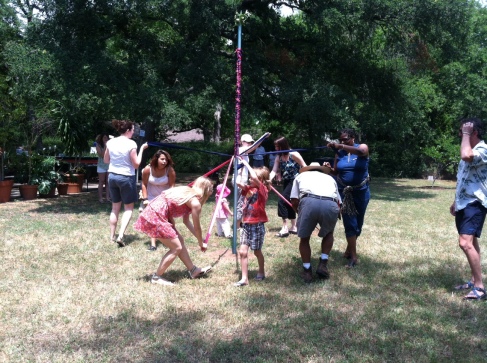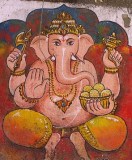In my last Ayurveda Foundations post, I described the main qualities of Vata dosha (the energy of Air and Space): dry, light, cold, rough, subtle, mobile and clear.
In human beings, Vata’s primary responsibility is to coordinate movement and communication. When Vata is in balance (i.e., when it is maintained at the original baseline level set at an individual’s birth), then that person’s movements and communications are effective and healthy.
However, when Vata dosha gets elevated above an individual’s unique “norm,” then signs of Air and Space emerge: cracking joints, dry skin, constipation, weight loss, insomnia, poor circulation, pain, stiffness, tremors, irregular heart beat, fatigue, and ringing in the ears.
In the mental-emotional realm, aggravated Vata can create fear, anxiety, worry, forgetfulness, and an inability to focus. “Spaciness” is a sure sign of excess Space element, a component of Vata.
What causes Vata dosha to get elevated? According to the law of “like increases like,” exposure to Vata’s qualities will cause Vata to go up. Some common culprits include windy weather and eating leftovers (incarnations of the dry quality), high altitude and caffeine (light), cold weather and frozen food (cold), crunchy chips and granola (rough), repetitive thought patterns and recreational drugs (subtle), excessive exercise and travel (mobile) and staying up late (clear).
Since Vata is responsible for movement and change, it plays a critical role in maintaining overall balance – and it is often implicated when balance is lost. According to the ancient texts, more diseases arise from an excess of Vata than from the other two doshas combined.
During the particularly changeable and dry seasons of autumn (and sometimes winter), Vata is high, as it is in our elder years. Considering our cultural tendency towards constant movement (with air travel, commuting, and multi-tasking as our norms), most Western city-dwellers consistently experience high Vata. The persistent influence of cyber-“space” doesn’t help.
Therefore, it is wise to take extra steps to keep Vata dosha from getting aggravated. The best antidotes contain the opposite qualities to Vata: oily (moist), heavy, warm, smooth/slimy, gross (substantive), and stable. Bring on the oatmeal with ghee, slow walks on the earth, and a steady meditation practice!
In the next post, we will dive into the intricacies of Pitta dosha, the energy of Fire.
* * * * * * * *
A reminder… TOMORROW NIGHT is my free webinar:
“Stop PMS and Menstrual Pain with Ayurveda:
How to Create Boundless Energy and Feel Great All Month Long”
Tuesday, June 26, 7-8:30pm CDT
To register or for more details, click here

















